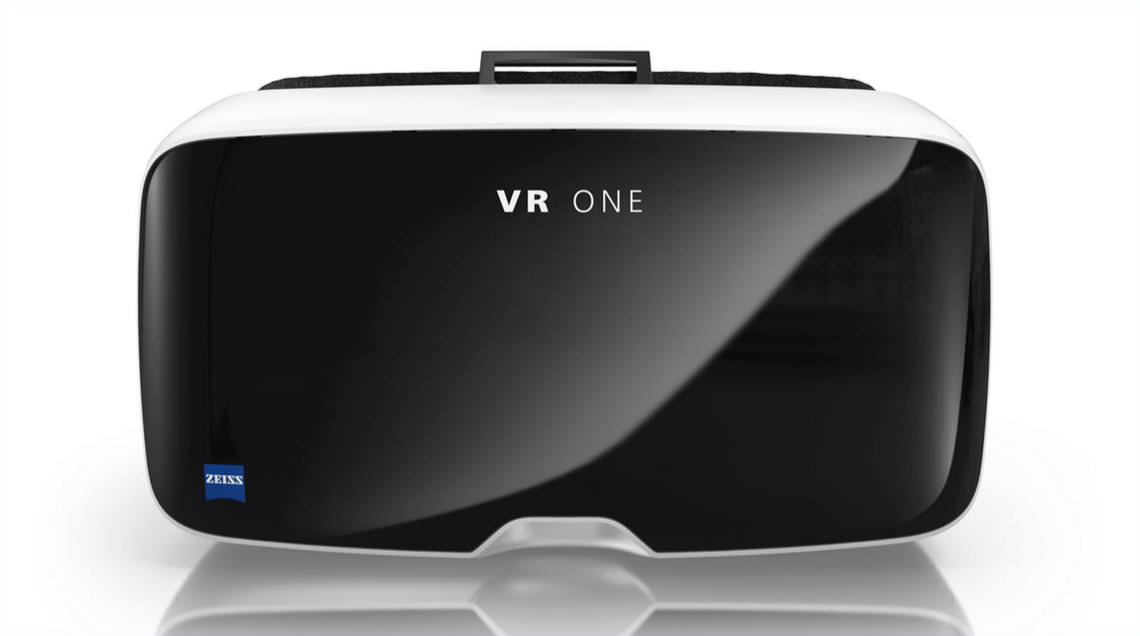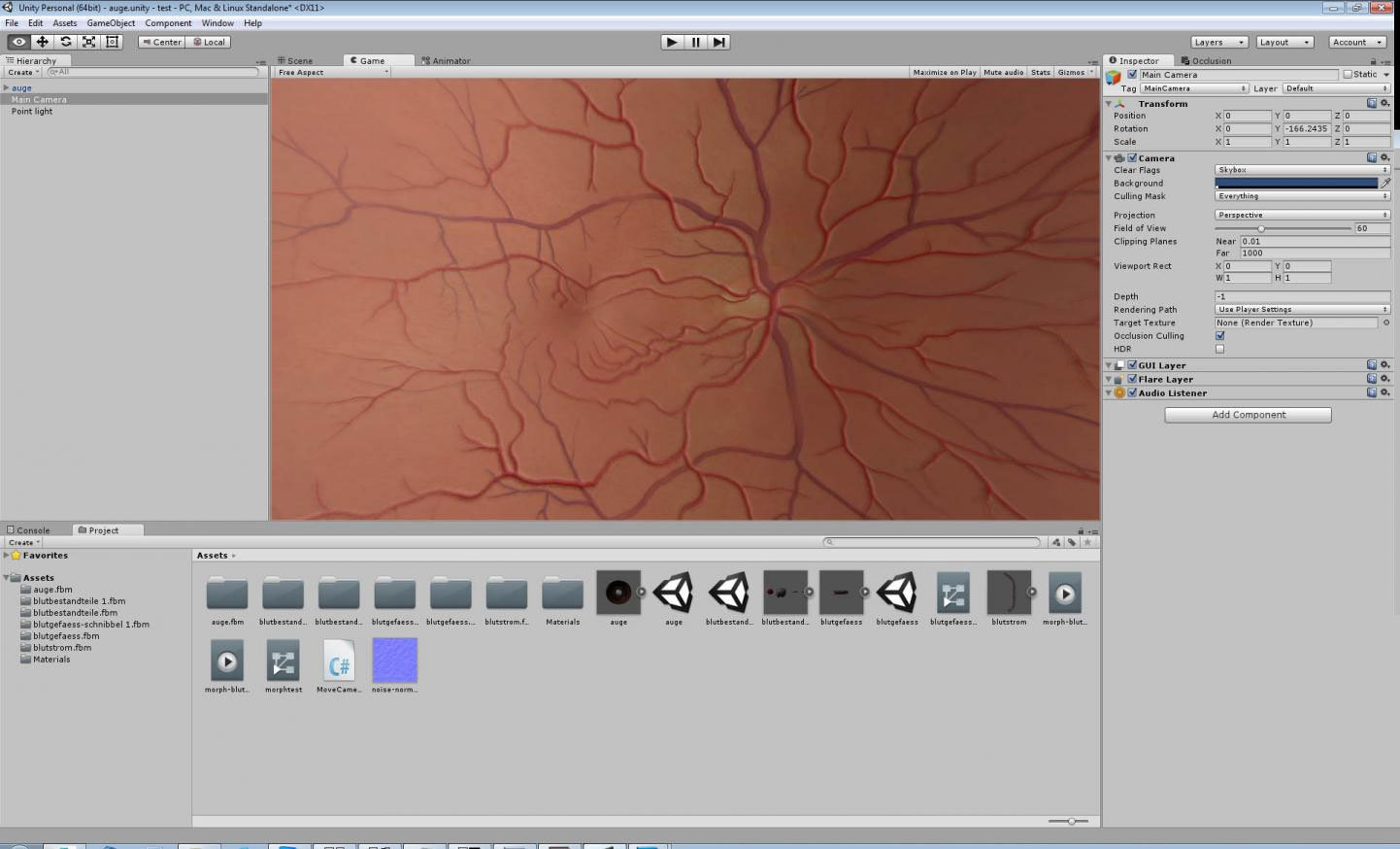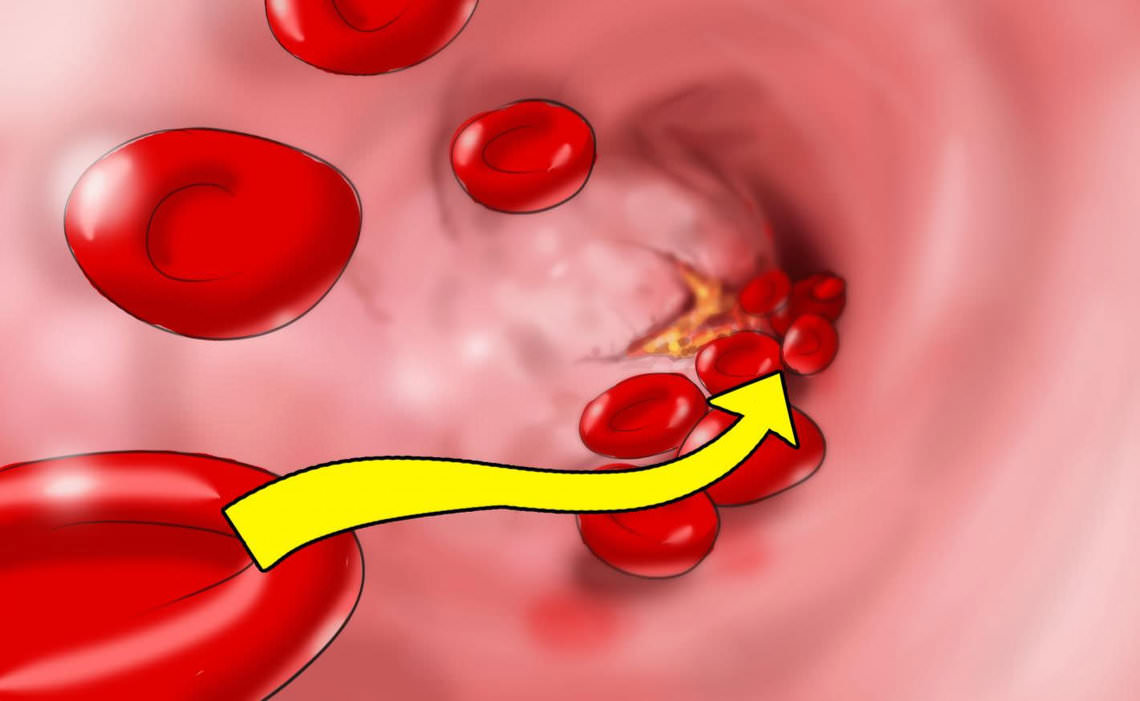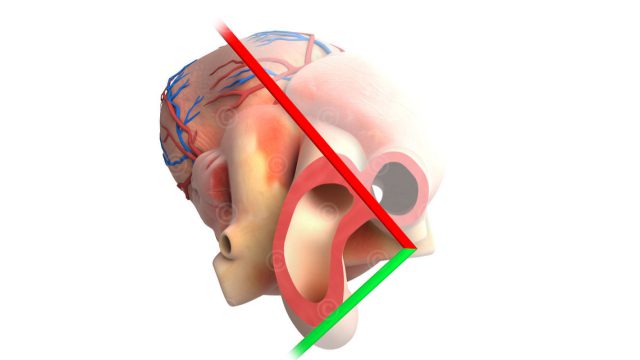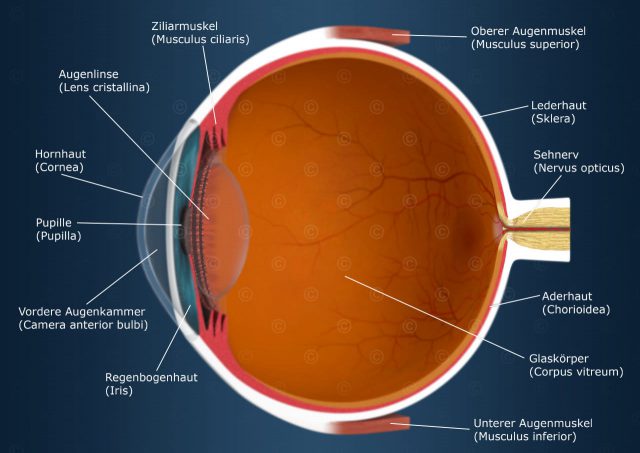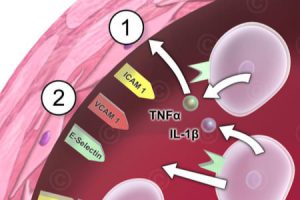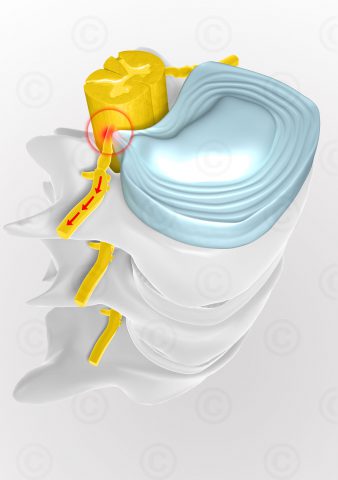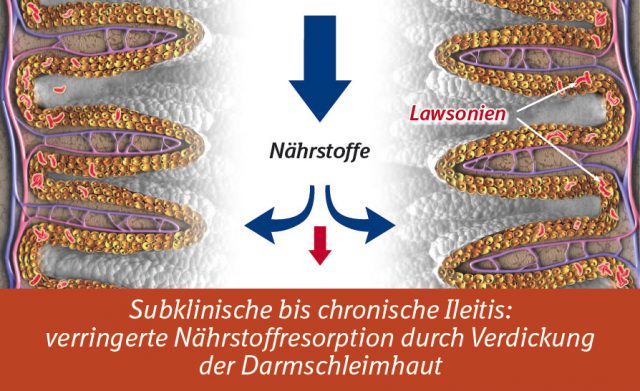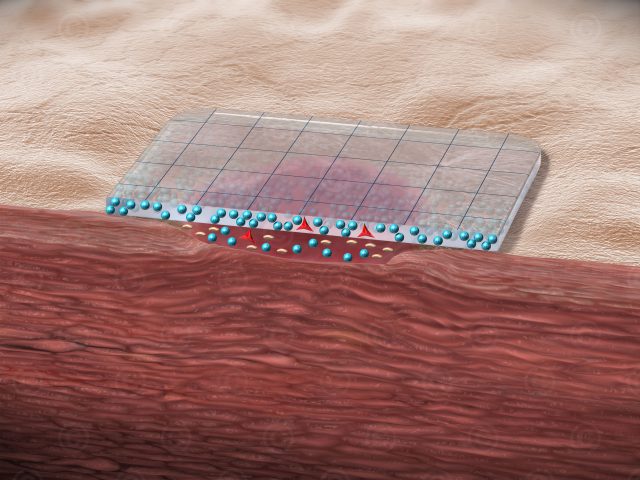The customer needed for an upcoming medical conference an application on the “impact of metabolic disorder in type 2 diabetes”. The issue should not be treated with a linear 3D animation, but an interactive VR application to allow a journey into the body.
As the first phase of this production several technical implementation possibilities were discussed. The decision was made in favor of an Android based realization. As a development platform Unity3D was chosen, because it was the most suitable considering the project specifications and has an advanced Android export. As VR goggles, the Zeiss VR One was chosen because of it´s high quality in terms of workmanship, appearance and comfort.
In the second step of the project the content, wich was elaborated by the medical authors, was discussed with the customer. For this purpose, Medical Graphics created at the key scenes individual sketches to communicate the imagery as early as possible.
Several operating concepts were discussed for this project. During various tests, however, more complex interaction presented more out as an obstacle, because the glasses should only be worn a short time and learning the interface should not be given too much space. In connection it was also decided to guide the viewer by a speaker throught the content. It was thus possible to dispense further interaction elements.
Two sequelae in Diabetes2 were discussed for content: diabetic retinopathy and diabetic macroangiopathy.
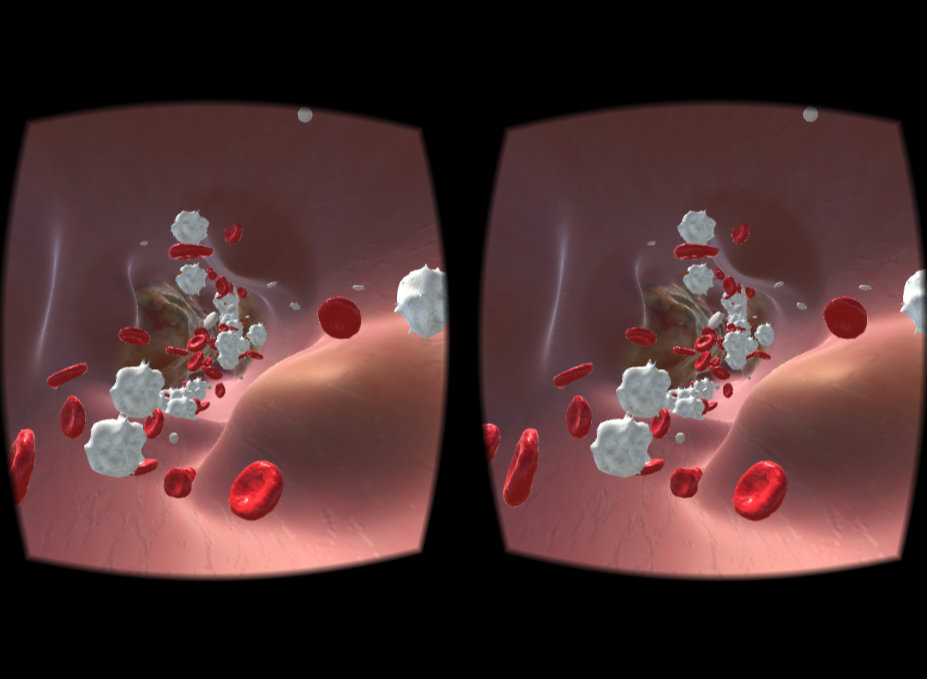
Screenshot VR app
In the latter, a scene has been selected in a coronary artery (Ramus intraventricularis anterior), in which the viewer is positioned. On the vessel wall a developing stenosis was shown that eventually lead to a complete occlusion of the vessel. This was realized by morph targets of the vessel geometry and transitions of the diffuse and normal maps. It was important here to display the changing blood flow (erythrocytes, monocytes, platelets) due to the stenosis and the incorporation of LDL particles in the stenosis. The blood components were implemented as a particle system in Unity, as this allowed simpler adjustments later in the project and also considerably reduced the data size of the scene, since the particles were generated parametrically. To optimize the scene onto the mobile target platform, some reductions in the geometry of the particles were necessary and also an adaptation of the shader to cope with the possibilities of the Nexus6.
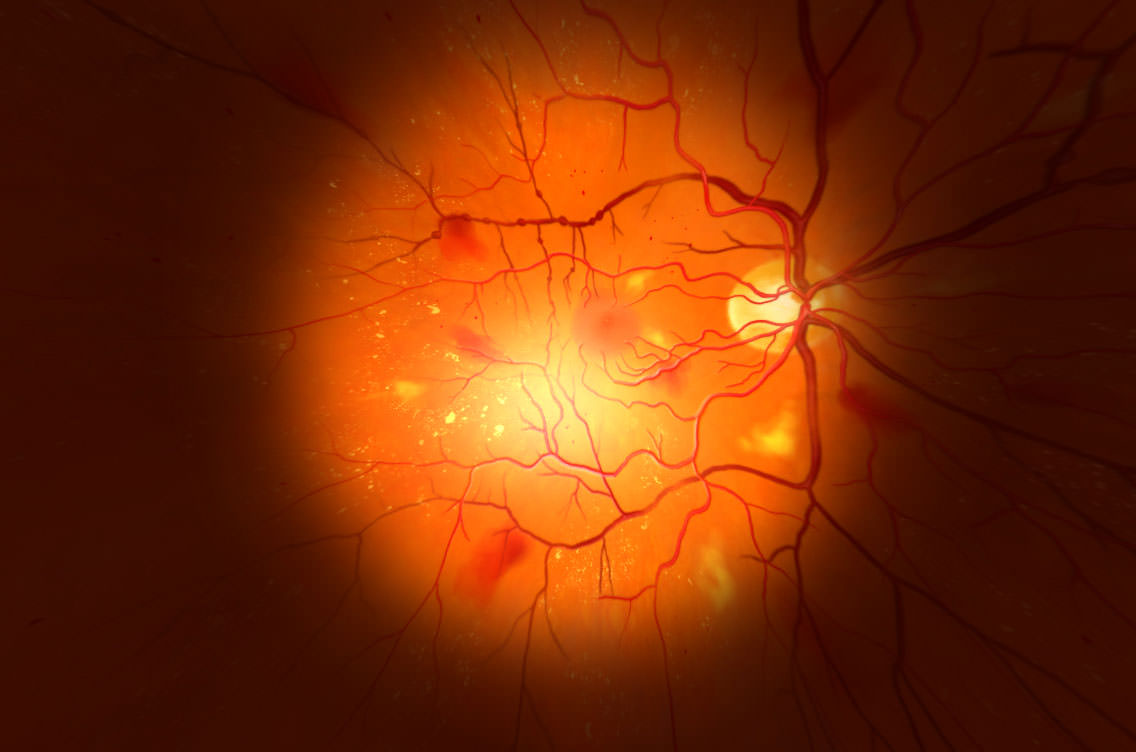
Screenshot VR appp – damaged retina
In the second subject (diabetic retinopathy) the camera was placed in the interior of the eye, whereby a view on the retina was possible and also a view through the lens to the outside. The changes on the retina were visualized with multiple high-resolution textures (8192px * 8192px), which are caused by diabetic retinopathy (such as microvascular abnormalities, microaneurysms, cotton wool spots, hard exudates).
During the congress 10 VR goggles were used at the booth of the client and attracted considerable interest.
The rights of use of illustrations and animations shown lie with the customer. Photo “Zeiss VR One” from Digital Content Network under CC-BY Lizenz.
